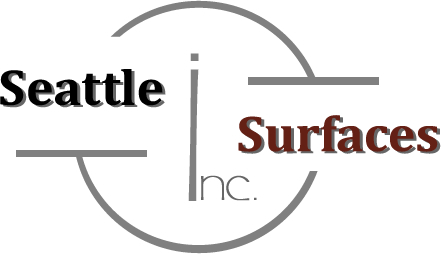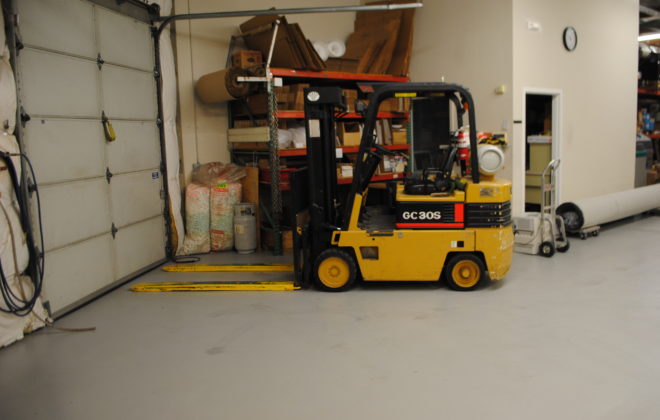One Day Garage Floors: Are They Better?
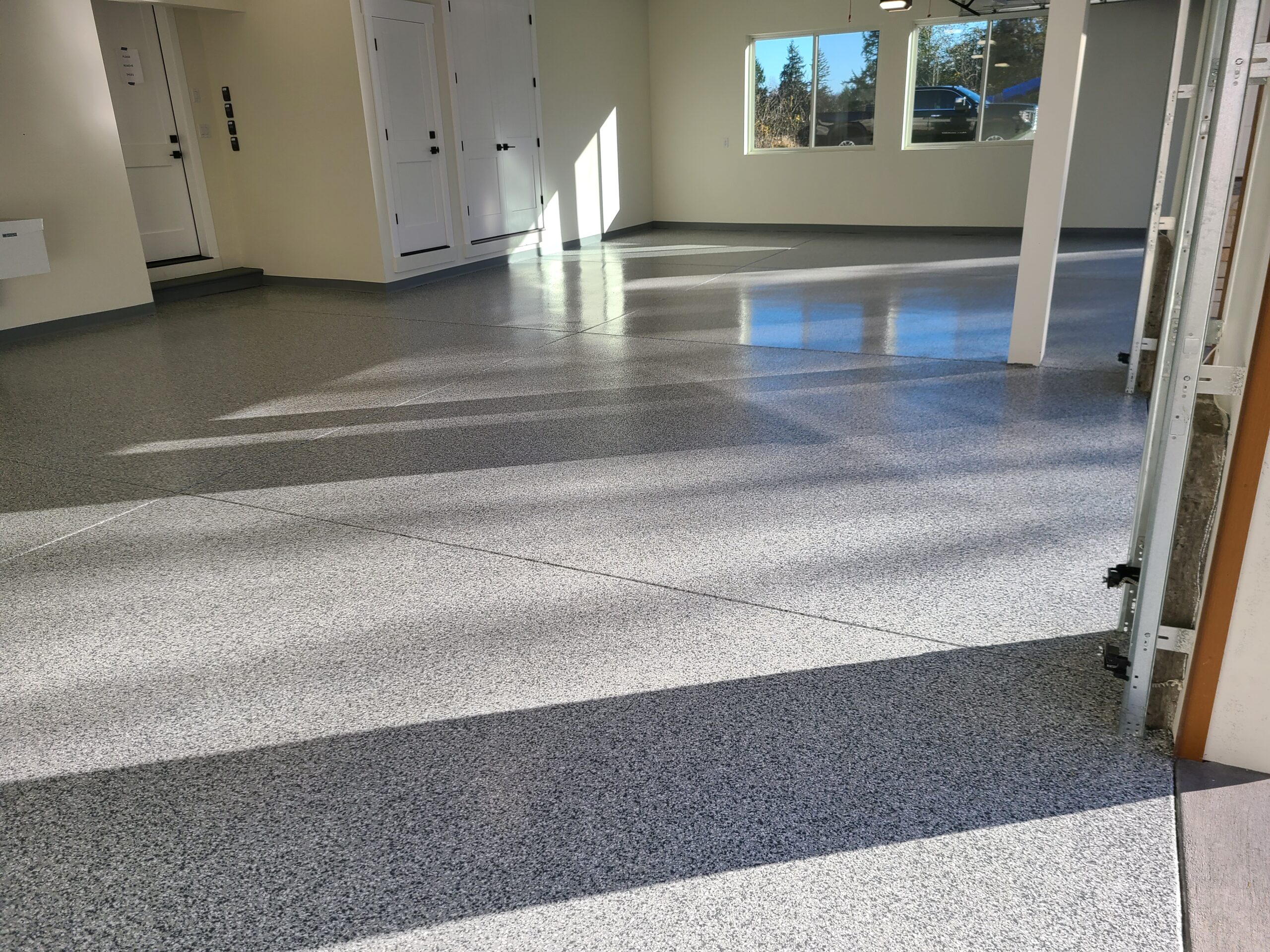
Garage floor coatings have been around for quite some time, particularly the full flake broadcast floor. These have become more popular recently, as homeowners learn the benefits of coated floors over bare concrete. The increase in demand for coated garage floors has of course, resulted in an increase in companies offering the service. Many of these newer companies are offering one day garage floors. This sounds great! There is less time with workers at your house. There is less time with your belongings stashed elsewhere. And even less time with your cars parked outside! All of it sounds great. They also advertise that they are better than traditional epoxy floors. Some claim their products are four times stronger. Others claim twenty times stronger! And many offer 15 year warranties and some even lifetime warranties!!! So what are the potential downsides? Are they really better?
One Day Garage Floors vs. Hybrid Garage Floors
Understanding the Materials
In order to compare a one day floor system to a more traditional system, you first need to understand the materials that comprise them. Epoxy is a chemical compound typically made up of resin and hardener, that when combined, cures into a durable hard coating and is typically associated with traditional garage floor coatings. Polyureas and polyaspartics, the materials used for one day floors systems, are chemical compounds that were created by modifying traditional urethanes. They are typically made up of two components like epoxies, however they have a much quicker cure time. This is what makes a one day floor installation possible. They are also UV resistant, and offer better abrasion resistance. Does that mean they are the better floor system? I’d venture that this is the wrong question ask? A better question would be ‘who does this type of floor system benefit more, the contractor or the homeowner?’
Who Benefits Most?
Certainly contractors benefit from only mobilizing to a job site once. And if a job can be completed in a day, workers can be on another job the following day. This increases earning potential and profits. So obviously there are some benefits for the company installing one day garage floors. The debate here isn’t about what is best for the contractor. The debate isn’t even about which material is better. The one day floor companies often make claims that their products are twenty times stronger, however there is no evidence to back this up. They also claim their system is better because it is done in a day and is more convenient for the homeowner. But these are just marketing tactics. Are they really claiming that these are the best garage floor systems available for their clients? Or are they just promoting the system they use?
I would venture that the entire epoxy / polyaspartic debate is a straw man argument. Many, if not most companies installing garage floor systems utilizing epoxies, aren’t using epoxies for top coats. Instead they are using them for base coat material directly applied to the concrete and serving as the bonding agent for the flakes. Once cured, the flakes are then top coated with a polyaspartic material just like the one day floor guys. This material has all the benefits mentioned earlier, particularly UV resistance and abrasion resistance. It has a fast cure time which allows a quicker return to service. These floors are often referred to as hybrid floors. The one day floor guys don’t talk about hybrid floors because it negates much of their argument about why their products are better.
If a hybrid floor takes longer to install, and is more costly, why would companies choose that system over a one day system? There are several contributing factors here that we will take a look at, but all of them add up to a belief that a hybrid system is a better system long term for both the client and the contractor, not just the contractor.
Why A Hybrid Floor System?
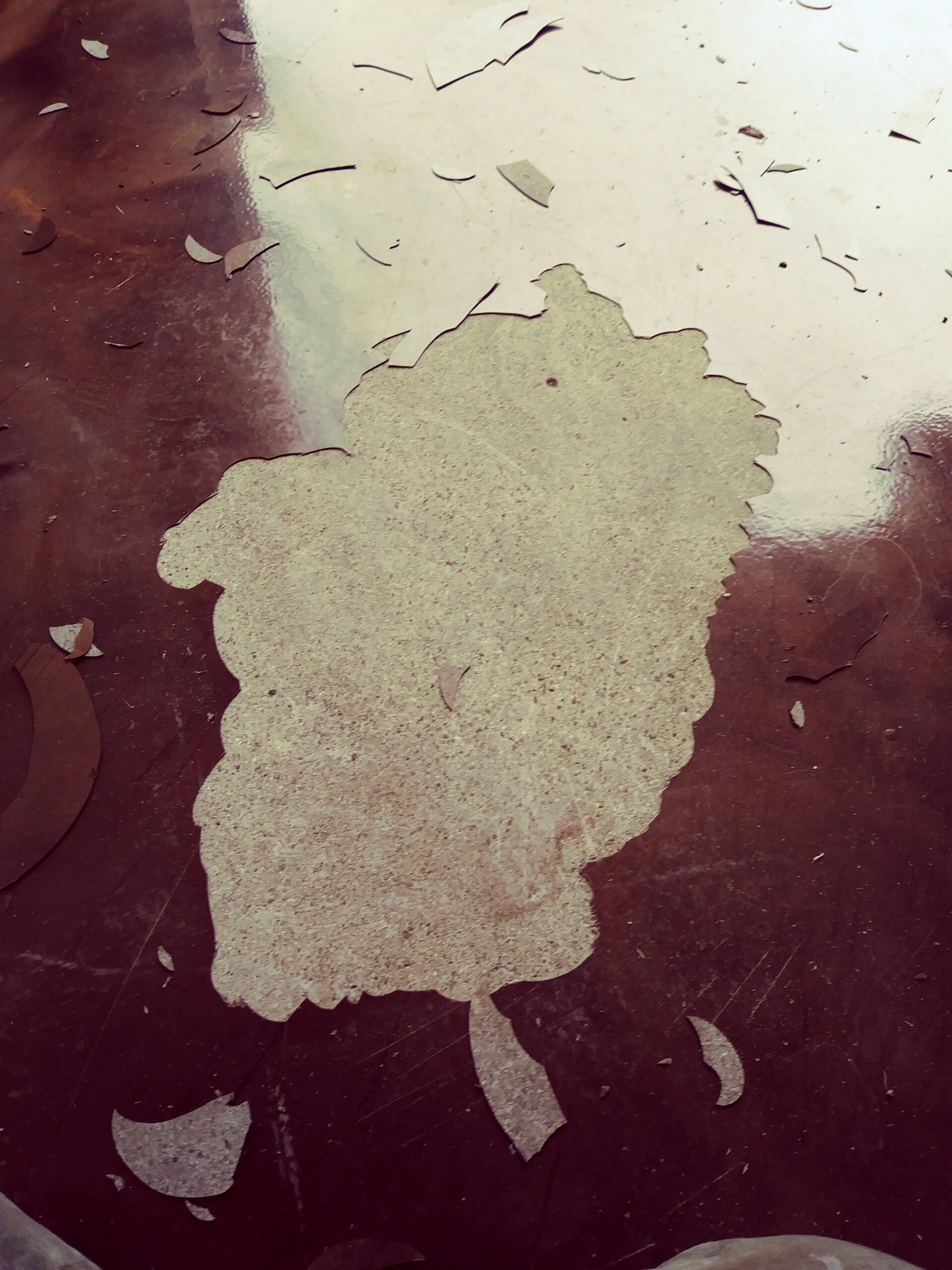
Probably the biggest driving thought process behind using epoxy as a base coat in a hybrid system is that it bonds better to the concrete surface. Slower cure times for epoxies allow them to wick into a properly prepared concrete surface better than faster curing polyureas or polyaspartics. If a material isn’t bonded properly to the surface, then its strength and other attributes won’t matter over time. Eventually it will fail.
We’ve been asked to remove plenty of floors that were peeling off the concrete and never fully bonded. Some of these were cheap box store products, or DIY jobs and failures are par for the course. You can read more about that here. We have also removed professional grade materials where the coating didn’t bond properly to the substrate.
Floor Failures
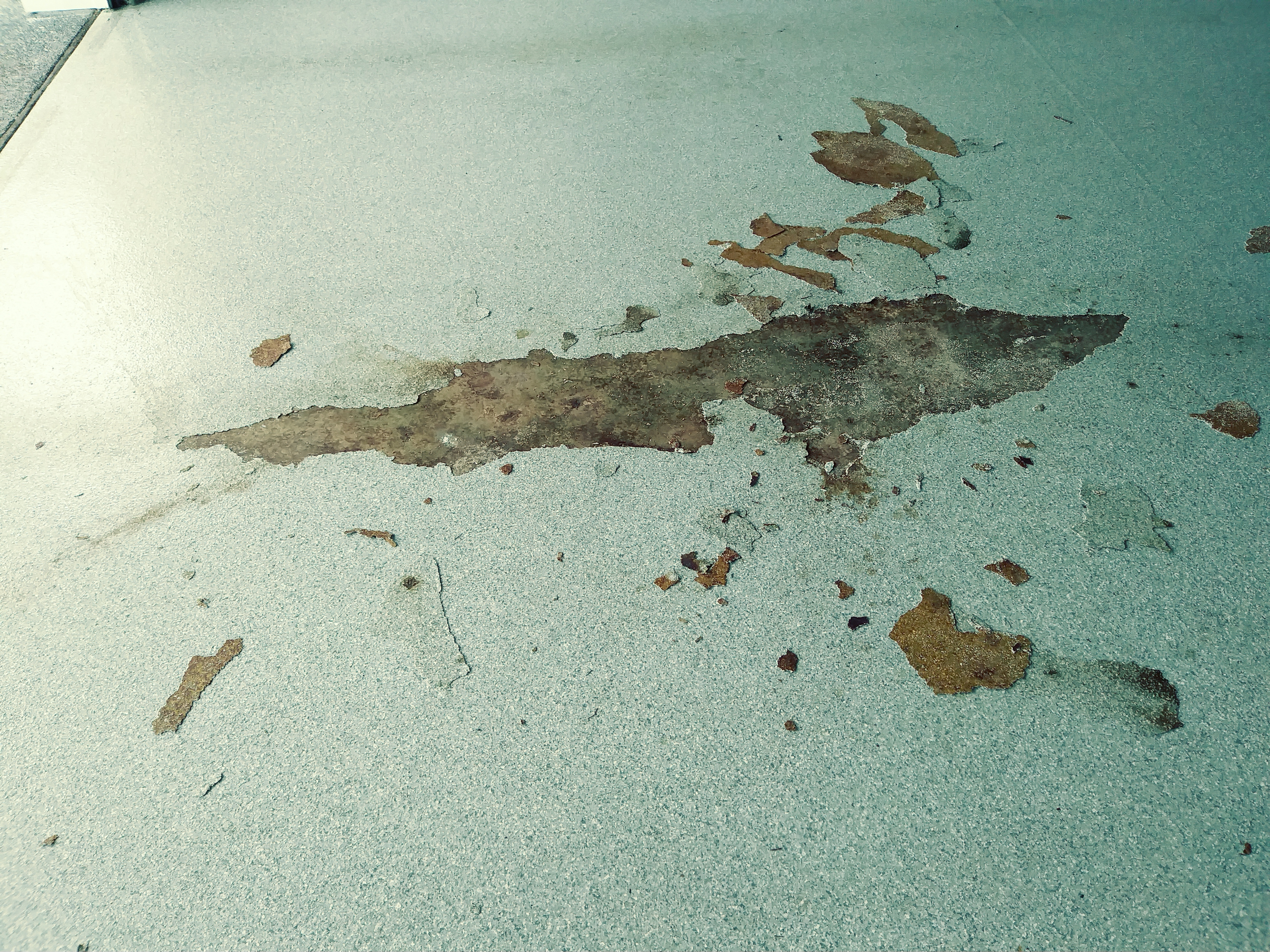
A floor failure is major a problem for any reputable coating company. It not only leaves a bad taste in the client’s mouth, but they are costly and time consuming to fix. As technology and materials advance, the risk of failures can be minimized. But in this industry there are so many factors that come into play, that there is no way to eliminate them entirely.
Many of these factors are scientific involving temperature, humidity, dew point, the composition of the concrete and how the materials being applied react under different variations of all of those. As you can imagine, there are too many scenarios to count. You can read more on these here. On top of this, there is the human factor. Anyone who has been in this industry for a while can recall a job where materials were mixed incorrectly. Someone forgot one of the components or added the wrong amount causing material not to cure properly. In fluid applied flooring, it is a worst case scenario. Much can be done to minimize these risks, but they will never be removed completely.
In addition to these risks, there are a few other known factors that cause floors to fail. Ignoring these means you are simply rolling the dice hoping for a good result. Sadly, this is what many of the one day floor companies do on a regular basis.
Improper Surface Preparation
How so, you ask? Well, when it comes to fluid applied flooring the concrete substrates have to be prepared. This is the process of removing contaminates on the surfaces, as well as creating a concrete surface profile or CSP. This is a standardized measure for the ‘roughness’ of a surface that is defined by the International Concrete Repair Institute (ICRI). The CSP has a corresponding number that indicates how smooth or rough the concrete has to be for different materials to bond properly.
Fluid applied floors almost always require a CSP3. This is only produced through grinding or shot blasting. Since shot blasting equipment is extremely expensive, most companies use concrete grinders. They are typically cheaper and more versatile, as they can also be used for polishing concrete. The down side to grinding concrete is when it is extremely hard or uneven. Unfortunately, here in the Northwest we have our fair share of both of these.
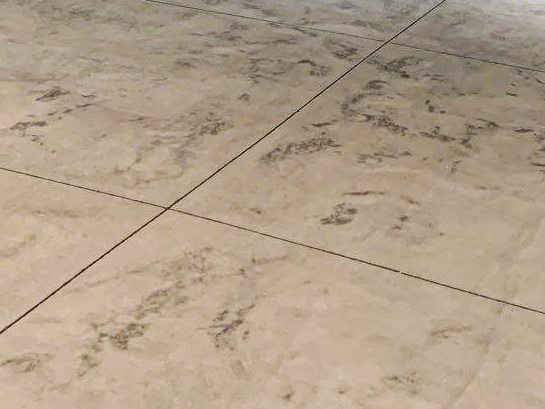
When concrete is uneven, the diamonds used to grind it only hit the high spots. This leaves the low spots untouched. Since the goal of the process is to remove the weaker cream from the surface along with contaminates, while creating the required profile, any low spots that are missed are potentials for failure. The solution is to continue grinding or to hand grind these spots until the entire surface is at a CSP3. This can be a time consuming process, especially if the concrete is extremely hard.
When you consider that treating cracks, spalls and divots is also part of surface preparation, and that this is just the first step of many involved in installing a garage floor coating, it makes you wonder how the one day floor guys get it all done. My guess is that corners are often cut. I’ve seen plenty of pictures of one day floor companies showing off prepped floors where none of the low spot are profiled at all. Does this mean that the floor is going to fail? Certainly not, but it could. Does it mean the floor has a higher chance of failing over one where the entire substrate was profiled correctly? Absolutely!
Moisture Vapor Transmission
Another common factor in floor coating failures is moisture. Concrete is porous and when a solid coating is applied it can trap moisture vapor passing through the concrete. If not treated, this vapor can accumulate under the coating and literally push it off the concrete. Bubbles form and ultimately the coating will fail. The Northwest is a wet climate many months of the year. Moisture vapor is always a concern with coatings. This is particularly true for older homes where often the concrete was installed without a vapor barrier under it. It can also be problematic in newer homes. If ground water changes direction a problem can appear where there was never one before.
The products used in one day floor systems don’t account for moisture issues. And while some companies may offer a moisture system, it would add a day to the job making it a two day system. With hybrid floor systems, a moisture mitigation product can be used under the base coat, or as the base coat with some brands of material, providing protection from failures due to moisture. In fact, with hybrid floor systems, there are many materials that can be used as a base depending on the environment it is being installed in. For example, if thermal shock is a concern, a urethane cement can be used. Hybrid floors can be designed with specific factors in mind providing performance that goes well beyond a speedy install.
Our Process
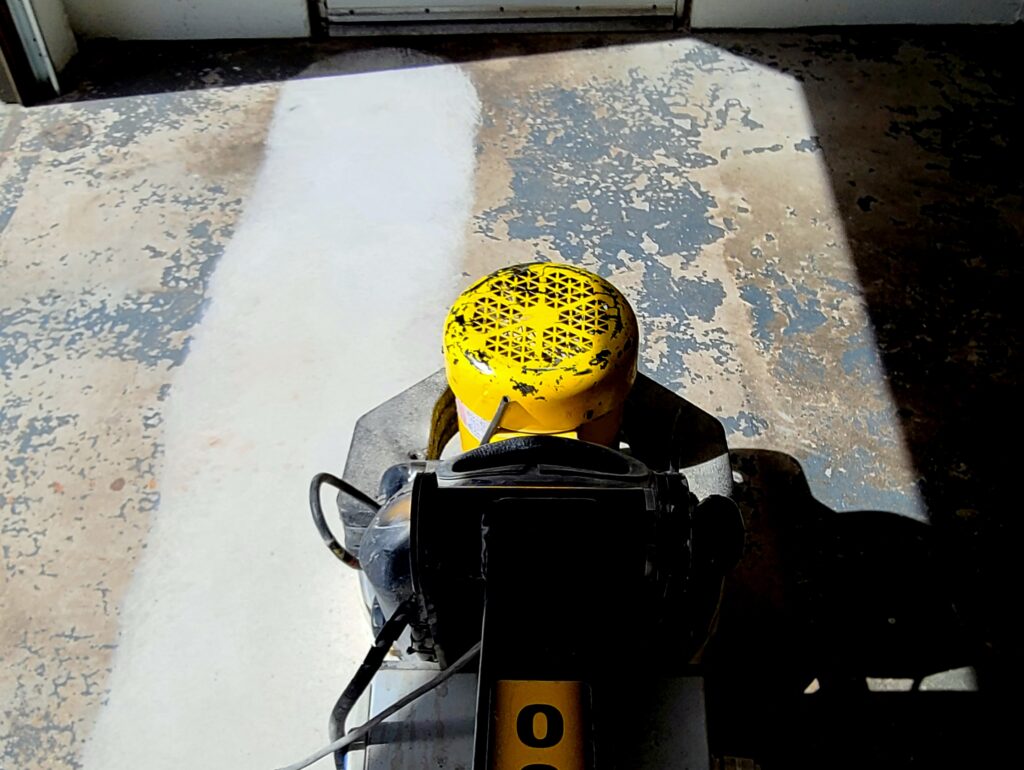
When we install a garage floor system we always grind the surface, unless we are shot blasting. If the concrete is uneven, we hand grind the low spots or continue to run our larger equipment until the entire floor is profiled. We treat cracks, spalls, and surface damage as part of this process. We understand that any coating system is only as good as the substrate it is going over.
Once the prep is completed, the floor is vacuumed thoroughly. We can then install the base coat and broadcast the flakes into it. This typically takes the entire first day, or enough of it, for it to not make sense to continue. I don’t want my guys rushing because they want to get home. And I don’t want them making mistakes because they are tired on the tenth hour of an install trying to get a floor done in one day.
After the base coat is cured, the loose flakes are reclaimed. The floor is then scraped each direction to remove any sharp flakes standing on end. After another thorough vacuuming, the top coat material is applied. We use a slow cure high solids polyaspartic. The reason for this is twofold. Lower solids products have to be applied thinner and they don’t coat the porous surface of the flakes as well. This can result in a top coat that has too much texture. It will hold dirt and be difficult to clean. It can also result in a blotchy surface that isn’t even and doesn’t look very good.
The other problem with these products is the working time. The one day floor guys typically use fast cure materials to get everything done in a day. This isn’t a problem most of the time, but in cases of high humidity or high temperatures, the working time can be drastically reduced making the installation extremely difficult and sometimes impossible.
Even the most well trained installers can struggle when the material working time drops to a few minutes. This can result in the material being pulled too thin in the base coat. When this happens, fewer flakes will stick. And while this isn’t always visible, it can be, and it means the coating is thinner and less durable in that spot. If the material is pulled too thin on the top coat, the surface will be very rough making it difficult to clean and visually the surface will look uneven. In some cases the material can begin to thicken making it difficult to spread. This results in heavier spots that appear glossy in the surface. Sadly we see these all of these fairly often.
Final Thoughts

As coating installers there are plenty of projects that we have done where a fast install was required. These jobs are typically for businesses where the down time of being closed outweighs the downsides of using quick cure materials. We have coated food processing plants on weekends, and done jobs for restaurants at night where employees would be arriving in the morning and the floor had to be dry. Fast cure coatings make sense in these situations. Spending an extra day on a garage floor coating to make sure it not only looks great, but will perform without fail for years to come, is definitely worth the extra time.
We have done hybrid garage floors with the same system for the last 6 or 7 years without issue. Most of the companies offering lifetime warranties haven’t even been installing floors for that long. And some of the materials they are using haven’t even been around that long. If you are considering a garage floor coating or any other type of fluid applied flooring, we would love to talk with you about your project.
Tags In
Related Posts
Categories
- Acid Etch (2)
- Acid Stains (1)
- Acrylic (1)
- Basement Flooring (5)
- Broomed Overlay (1)
- Commercial Flooring (15)
- Commercial Kitchens (4)
- Concrete Dyes (5)
- Concrete Resurfacing (17)
- Decorative Concrete (16)
- Decorative Concrete Coatings (16)
- Designer Epoxy Flooring (5)
- DIY Epoxy Kits (3)
- Embedded Logos (2)
- Epoxy (15)
- Epoxy Broadcast Floors (1)
- Epoxy Coatings (7)
- Epoxy Flooring (6)
- Epoxy Floors (6)
- Epoxy Mositure Barrier (4)
- Epoxy Paint (4)
- Featured Post (6)
- Flexible Epoxy (1)
- Fluid Applied Floors (3)
- Food Processing (2)
- Garage Floor Coatings (7)
- Hand Troweled Floors (1)
- Hot Tire Pick Up (2)
- Integral Cove Base (1)
- Loading Docks (1)
- Metallic Epoxy (5)
- Metallic Marble Stains (2)
- Micro-toppings (10)
- Moisture Mitigation (2)
- Plywood Sub-Floors (1)
- Polyaspartic (9)
- Polyurethane (7)
- Seamless Floors (13)
- Spray-on Overlay (1)
- Stained Concrete (5)
- Stamped Concrete (4)
- Stencils (3)
- Thermal Shock (1)
- Uncategorized (3)
- Urethane Cement (3)
- Water Damage (1)
- Waterproof Concrete Decking (1)
